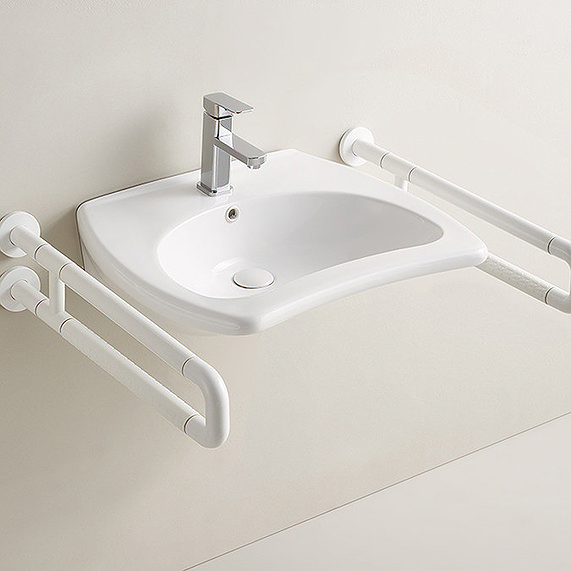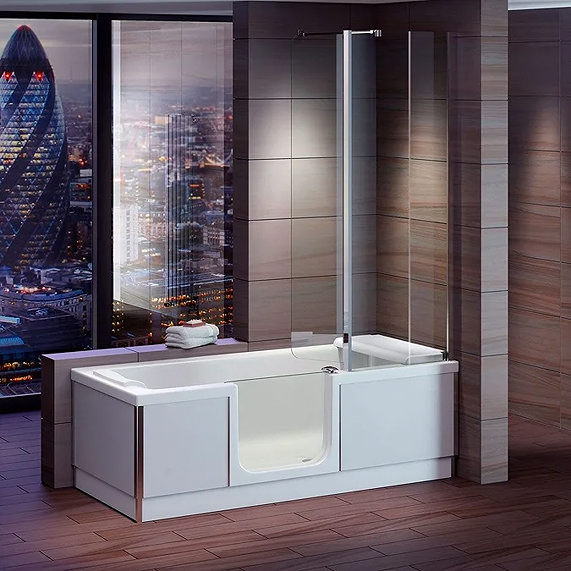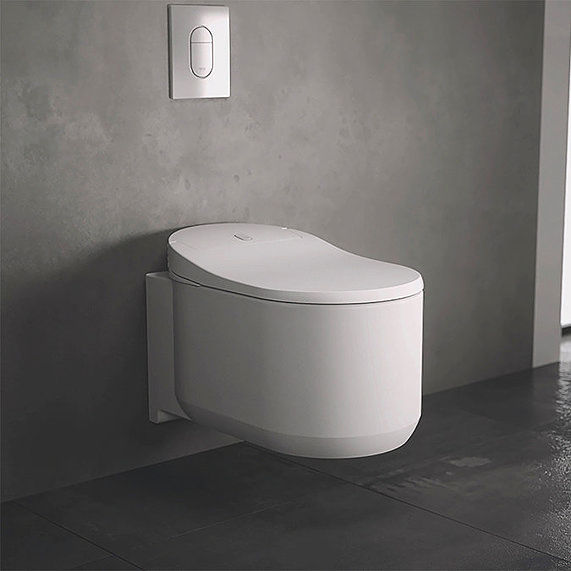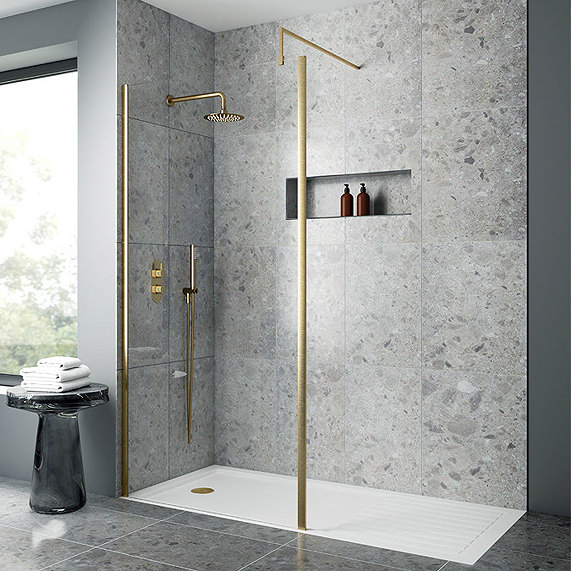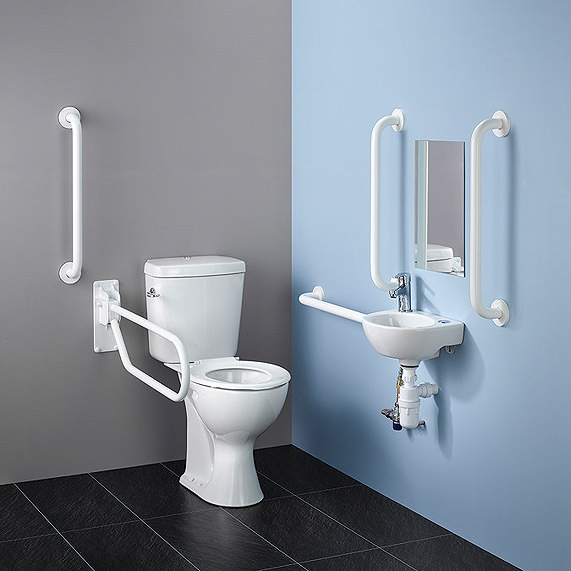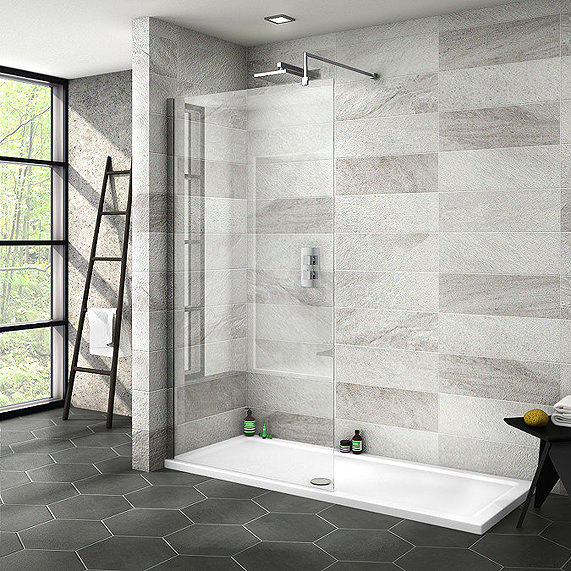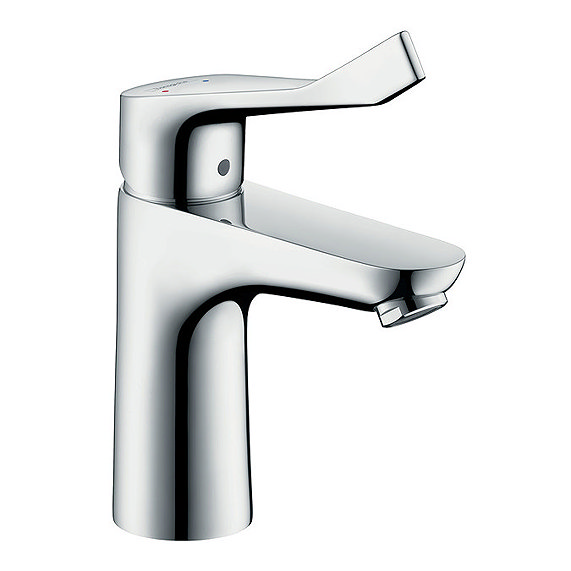OUR BOXING DAY SALE ENDS SOON!
Free delivery on orders over £499*
Assisted Living Bathrooms Buying Guide
Assisted Living Bathrooms Buying Guide
Assisted Living Bathrooms Buying Guide
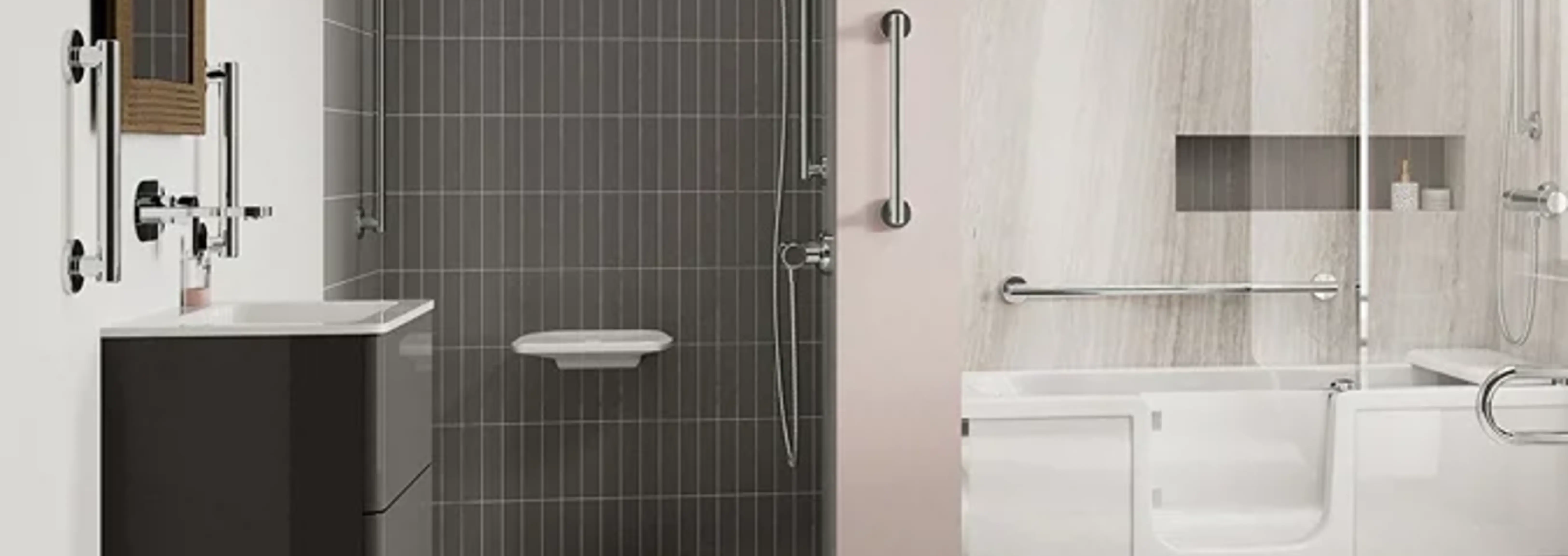
Welcome to our expert assisted living bathroom guide—your complete resource for creating a safer, more accessible bathroom.
If you or a loved one have limited mobility, balance concerns, or age-related changes, this guide will walk you through everything from basic planning to picking the perfect fixtures. You’ll learn how to future-proof your bathroom—all while keeping design and style front and center. Let’s begin!
What Exactly Is An Assisted Living Bathroom?
An assisted living bathroom—often called an accessible, adapted, mobility-friendly, or disabled-friendly bathroom—is a space specifically designed or modified to make bathing and toileting safer and easier for those with physical challenges. These bathrooms often include features like walk-in or low-threshold baths, level-access showers, shower seats and grab rails—all aimed at reducing the risk of falls and supporting user independence.
Click Below to Jump to a Section
For First-Time Buyers
- Key Planning Considerations
- Safety, Hygiene, & Infection Control
- Types of Accessible Bathroom Fixtures
- Additional Safety Aids & Accessories
For Savvy Shoppers
- Cost, Budgeting, & Installation
- Maintenance
- Top Assisted Bathroom Brands
- Assisted Living Bathrooms FAQs
- Conclusion & Next Steps
For First-Time Assisted Living Bathroom Buyers
A Quick Overview
New to assisted living bathrooms? Don’t worry—we’ve got your back. Think of this as your beginner’s guide to creating a safer, more accessible space tailored to your needs. Here's what you need to know first:
Assessing Your Bathroom Space & Layout
- Measure Your Bathroom: Note width, depth, and height—particularly around the doorway. If you’re replacing an existing bath or shower, positioning new fixtures in the same area can streamline plumbing.
- Door Clearance & Access: Ensure outward-opening or sliding doors to prevent obstructions and facilitate wheelchair or walker entry. Aim for 32+ inches (about 813 mm) clearance.
- Floor Space: Leave enough room for manoeuvring, especially if wheelchairs or carers need easy access. A curbless shower or a walk-in bath can also help preserve floor space.
User Needs and Dependency
- Level of Mobility & Weight Requirements: Confirm the Safe Working Load (SWL) for lifts, chairs, and hoists. Features like locking mechanisms and autofill/overflow protection can be invaluable for users with arthritis or dementia.
- Physical & Cognitive Challenges: Thermostatic mixing valves (TMVs) help prevent scalding, while hydrotherapy jets ease muscle stiffness. Dementia-friendly bathrooms benefit from clear labelling and contrasting fixtures.
- Future-Proofing: If mobility may decline, leave space for future installations (e.g., ceiling hoists, wider door frames, extra grab rails). Pick designs that allow easy retrofitting without major overhauls.
Bathroom Space & Layout
Manoeuvring Room: Ensure doorways have a minimum width of 32 inches (813 mm) to accommodate wheelchairs, walkers, or other mobility aids. Outward-opening or sliding doors are highly recommended as they maximise interior bathroom space and prevent blockages during emergencies. This extra clearance allows for smoother navigation, reduces the risk of accidental bumps, and provides sufficient space for carers or assistance equipment if needed.
- Thresholds & Access: Curbless (level-access) showers reduce tripping hazards; upright “tub-style” baths free up floor space.
- Plumbing & Structural Considerations: Verify drainage capacity (especially for walk-in baths) and ensure adequate waterproofing. Wet-room conversions may require partial wall removal or floor modifications.
Safety, Hygiene, & Infection Control
Grab Rails & Support Rails
Always anchor grab rails to studs or solid walls to ensure maximum stability and safety. Using non-corrosive finishes and textured surfaces helps to reduce slippage and maintain durability over time.
Anti-Slip Flooring
Textured vinyl, rubber tiles, or slip-resistant laminate are excellent options for minimising the risk of falls. Keeping the floors uncluttered further enhances safety by avoiding tripping hazards.
Infection Control
Opt for wipe-down surfaces, such as smooth vinyl or water-resistant panels, which are easier to clean and help maintain hygiene. Warm-air spa systems may be a better choice than water-jet setups as they can reduce bacterial buildup.
Water Temperature Safety
Thermostatic mixing valves (TMVs) provide protection against scalding by maintaining a consistent water temperature. Sensor or lever taps are particularly helpful for individuals with limited hand strength, offering easier operation and added convenience.
Types of Accessible Bathroom Fixtures
Assisted Living Bathroom Accessories
Grab Rails
Offer a safe and stable point of support, helping users maintain balance and reduce the risk of slips or falls in wet or confined spaces. Often made of durable, non-corrosive materials, they can be installed near toilets, showers, or tubs, providing added security and peace of mind for individuals with limited mobility.
Shower Seats
Allow users to bathe without the strain of standing for prolonged periods. These seats can be wall-mounted, fold-down, or freestanding, giving individuals the flexibility to shower comfortably while reducing fatigue and the likelihood of accidents. Their surfaces are typically designed to resist slipping, ensuring additional protection in wet environments.
Arm Rests
Are commonly placed alongside toilets or basins to assist users when lowering or lifting themselves. By providing a sturdy grip on both sides, arm rests can enhance stability and help prevent sudden movements that might lead to injury. They also facilitate better posture and reduce strain on the arms and joints.
Raised Toilet Seats
Increase the overall height of standard toilet bowls, which can be crucial for those with hip or knee problems. These removable attachments make sitting and standing less of a challenge, often featuring padded elements or locking mechanisms for security. Many come in multiple height options, allowing users to select the level that best suits their comfort and mobility needs.
Alarm Systems
Add an extra layer of safety by allowing users to quickly call for assistance should an emergency occur. Pull cords, panic buttons, or wireless sensors can be strategically placed in bathrooms where a slip or fall is more likely. Such systems reassure not only the individual using the space but also carers or family members who want to ensure help is always within reach.
Colour Options
Choosing a suitable colour scheme is about more than just style; it can aid visibility, reduce confusion, and create a calming environment:
- Black or Grey: Ideal for modern bathrooms and creates visual contrast against white tiles or basins.
- Blue or Red: Great for dementia-friendly environments, providing distinct contrast to help with orientation.
- Brass or Chrome: Timeless finishes that add a stylish accent while remaining easy to maintain.
- Green, Silver, or Stainless Steel: Offer sleek, understated looks that complement various décor styles.
- Tinted Glass: Often used for shower panels to add privacy and a contemporary flair.
- White: Classic and clean, white blends seamlessly with most design themes and is easy to match with other fixtures.
For Savvy Shoppers: Technical Tips for Assisted Living Bathroom Buyers
Smart shopping starts here. From comparing core features to balancing accessibility needs with your budget, here’s how to get maximum safety, comfort, and style—because who says you can’t have it all?
Cost, Budgeting, & Installation
Accessible Bathroom Cost Range
Accessible bathroom products come in a variety of prices to suit any project or requirement:
Entry-Level Accessibility Solutions
Price Range: £100–£200
Features: Essential products like compact grab rails, fold-up shower seats, and budget-friendly comfort-height toilets. Ideal for making small but meaningful upgrades.
Mid-Range Accessibility Solutions
Price Range: £200–£400
Features: Enhanced features like rimless toilets, larger wet room screens, and shower seats with padded arms. Balances quality, functionality, and style for versatile bathroom designs.
High-End Accessibility Solutions
Price Range: £400–£1000
Features: Premium options such as smart toilets with bidet functions, fully equipped Doc M packs, and walk-in baths with stylish finishes. Designed for ultimate comfort and usability.
Luxury & Bespoke Accessibility Solutions
Price Range: £1000 and above
Features: High-tech innovations like wall-hung smart toilets, designer walk-in baths, and complete showering systems with thermostatic control. Perfect for tailored, cutting-edge accessibility solutions.
Pricing disclaimer: Prices and stock levels are subject to change. Always verify current prices and availability through our product pages. If your order is over £499, you’ll qualify for free standard delivery (UK Mainland), giving you even more value for your money.
Installation Costs
- Use reputable installers with experience in disabled adaptations.
- Electrical work (e.g., powered seats, spa jets) requires a qualified electrician.
- Wet rooms often need tanking, slip-resistant flooring, and careful drainage design.
Financial Assistance
- Disabled Facilities Grants (DFGs): Funding for necessary adaptations, often requiring an Occupational Therapist assessment.
- VAT Relief: May apply if you have a recognised disability.
- Charities & Community Schemes: Some offer partial funding or low-interest loans.
- Local Building Regulations: Ensure compliance with WRAS and, in the UK, consider Part M for accessibility guidelines.
You can even make your dream accessible bathroom a reality with flexible financing. Look for the "finance available" tag in our listings.
Approvals & Certifications
To ensure you’re getting safe, high-quality products that meet strict standards, look for these common approvals:
- TMV2: Indicates thermostatic mixing valves suitable for domestic and general healthcare settings.
- TMV3: A higher level of certification, often required in healthcare or nursing home environments.
- WRAS: Products carrying the Water Regulations Advisory Scheme (WRAS) approval comply with UK water supply regulations.
Top Assisted Bathroom Brands
When it comes to quality, durability, and advanced features, these trusted brands stand out:
- AKW: Renowned for specialised accessible bathroom solutions. Known for innovation, durability, and ergonomic designs that cater to varying mobility levels.
- Arezzo: Favoured for sleek, modern lines and premium finishes, ideal for those wanting a stylish yet functional assisted bathroom with minimalistic flair.
- Croydex: A go-to for high-quality grab rails, shower seats, and other accessories. Their products blend seamlessly into existing bathroom décor while improving safety.
- Etac: Focuses on advanced ergonomics—particularly shower seats and mobility aids. Their designs often include user-friendly features, perfect for older adults or those with dexterity issues.
- Milton Accessible Bathrooms: Offers fully adapted bathrooms built for comfort, sturdiness, and easy customisation. Popular for practical, long-lasting designs and expert customer support.
Brands Disclaimer: Availability can vary; check product pages or contact customer service to confirm stock before finalising your purchase.
Assisted Living Bathrooms FAQs
How can I make my bathroom safer for elderly users?
- To make a bathroom safer for elderly users:
- Install grab bars near toilets and showers.
- Use non-slip flooring or mats.
- Add a shower seat for comfort.
- Ensure bright, glare-free lighting.
- Choose comfort-height toilets to ease sitting and standing.
Conclusion & Next Steps
By considering mobility challenges, room layouts, and desired fixtures—from walk-in baths to roll-in showers—you can create a safe, comfortable, and stylish assisted bathroom.
An assisted bathroom can be an oasis of independence, making personal hygiene simpler and more dignified. By planning carefully and selecting products that meet your unique needs—be it a hydrotherapy walk-in bath, a sensor tap for easier control, or a complete wet room—you’ll ensure a practical, welcoming space that stands the test of time.
The goal of an assisted bathroom is to create a safe, empowering environment that supports current and future needs. Take your time, do your research, and consult experts to ensure your bathroom is the best fit for your lifestyle.
Ready to Learn More?
- Explore Our [Bathroom Design & Inspiration Blog]: Get the latest trends and creative tips to transform your bathroom into a stylish, comfortable oasis.
- Check Out Our [DIY Advice Blog]: Discover step-by-step guides, cost-saving hacks, and practical advice for hands-on homeowners.
Browse Our Other Buying Guides
From taps to toilets, our expert guides walk you through every aspect of planning the perfect bathroom.
